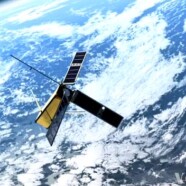Mini-Satellites to Help Predict Earth’s Climate
The difference between the amount of energy the Earth receives from the sun and the energy it radiates back to space affects whether our planet’s climate warms or cools. For now, nobody can measure that temperature difference precisely, but scientists at Johns Hopkins University’s Applied Physics Laboratory, in Maryland, plan to change that, using an array of small, inexpensive satellites called ‘cubesats’.
A cubesat is not much larger than a loaf of bread, but provides a compact orbiting home for a host of sensors and instruments.
Scientific breakthroughs over the past decade have made it possible to build cheaper and lighter satellites that can still hold all of the equipment of much larger spacecraft – communications, navigation and power generators, along with the payload for their assigned task.
Orbiting Cubesats
The Applied Physics Lab has sent two cubesats into orbit, and they are proving to be so versatile that more launches are already planned.
Bill Swartz is the leading scientist of a project called RAVAN that will use cubesats to better predict the Earth’s changing climate. “This would be used to measure what scientists believe to be a small imbalance between the incoming solar and outgoing, reflected and emitted radiation from the Earth that will drive future climate,” he said.
Swartz said the main sensor, called the radiometer, will be built from one of the blackest materials known – carbon nanotubes.
“One of the nice things about this technology is: It’s very black, and if we’re trying to measure the radiation being emitted or reflected from the earth we want a very, very black substance,” he said.
Nanotech Device
The first RAVAN cubesat will be launched next year to see how the nanotube device works.
“So, hopefully, within the next couple of years we will have raised the so-called technical readiness level of the carbon nanotube absorber that’s used in the spacecraft and some other key elements of that technology. And that would then be available for a future mission,” said Swartz.
The first satellite will be positioned between 550 and 750 kilometers above the Earth, allowing it to monitor the entire planet.
Later, a whole constellation of 30 to 40 cubesats will simultaneously register the radiation from all points on Earth, day side and night side, helping to answer the question that affects us all: what is the long-term future of our planet’s climate?

